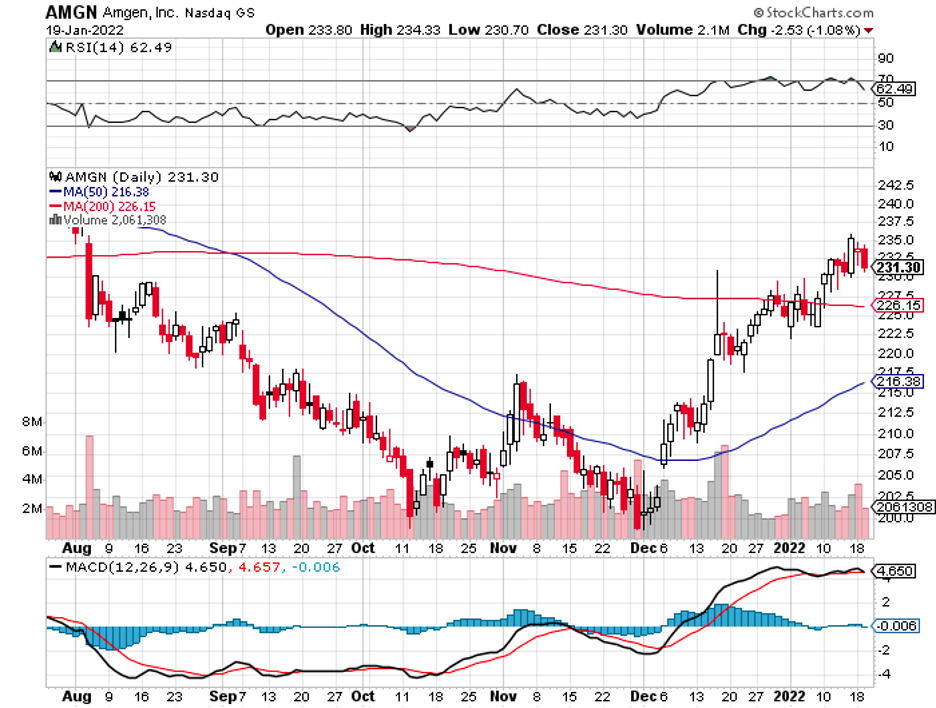To say that biotechnology stocks haven’t been performing well as of late is an understatement.
Over the past 12 months, the SPDR S&P Biotech Exchange Traded Fund (XBI) has recorded an over 30% loss and is anticipated to reach its 52-week low soon.
Investors have been pulling back from biotechnology stocks for several reasons like threats of drug pricing reforms in the US, the ever-increasing interest rates, and of course, the lure of rapid-growth assets such as cryptocurrencies.
Nevertheless, all is still not lost for the biotechnology sector.
The industry, in its entirety, continues to move forward with unprecedented innovations.
These groundbreaking discoveries, in turn, offer a myriad of untapped, top-value markets that will bode well for long-term investors.
This means that savvy investors would do well to make the most of this broad selloff in a highly promising segment.
One way to determine quality names in this volatile sector is to choose dividend-paying stocks.
After all, dividends are excellent sources of passive income. Apart from that, these can easily boost your portfolio if you plan to reinvest your money.
Basically, regardless of your investment strategy, choosing dividend-paying businesses can be really helpful in reaching your goals.
Among the names in the biotech industry, one that looks promising these days is Amgen (AMGN).
While Amgen’s dividend yield isn’t as high as the likes of AbbVie (ABBV) and Gilead Sciences (GILD), this pioneering biotechnology company is still a promising investment.
Recently, Amgen reported another dividend increase of 10.2%, indicating a rise from $1.76 to reach $1.94 per quarter, with the subsequent dividend expected to be payable by March 2022.
This results in an annual dividend of $7.76 and a respectable dividend yield of 3.41%.
More impressively, Amgen has been paying out dividends since 2011 and boosted its dividend not only annually but with an 11.97% in CAGR over the past 5 years.
Given the company’s history and growth trajectory, Amgen’s earnings growth rate annually in the next 5 years is estimated to be 6%, while its yearly dividend hike rate is projected at 7%.
At first glance, it’s easy to dismiss Amgen’s current standing.
In the third quarter of 2021, the company’s total revenue only reached $6.7 billion, indicating a measly 4% rise year-over-year.
A potential reason for this underwhelming growth is the pending patent cliff for some of its key products and the threat of biosimilars taking over Amgen’s target markets.
For example, cancer medication Neulasta reported a 25% decline in its sales year-over-year to contribute only $415 million in the third quarter.
Needless to say, this kind of disheartening top-line growth is partly responsible for the stock’s sluggish performance in the market lately.
However, other products in the company’s portfolio have reported much better performances than Neulasta.
There’s osteoporosis treatment Prolia, which rose by 15% year-over-year to contribute $803 million in the same period.
Even cholesterol drug Repatha showed off a 33% growth to record $272 million, while arthritis medication Otezla’s sales climbed by 13% to rake in $609 million.
On top of these, Amgen has also succeeded in developing new products that can easily provide additional revenue streams.
One of the most promising recently approved products is advanced non-small-cell lung cancer (NSCLC) treatment Lumakras, which received the US FDA green light last year.
Although there are many approved drugs for this condition, Lumakaras is the first and only treatment that targets specific mutations among non-squamous NSCLC patients.
This translates to 13% of patients suffering from that particular condition.
This is a massive market for Amgen.
Back in 2019, lung cancer was identified as the leading cause of cancer deaths in the United States.
At that time, the total was 139,603 individuals, which made up 23% of all the deaths attributed to the condition. Among the lung cancer deaths, 84% were identified to be of the NSCLC category.
So, if you put everything in perspective, the 13% patient population that Amgen exclusively holds equates to a big opportunity.
In addition, the European Union already approved Lumakras as well. This opens up yet another massive market for the treatment.
In the third quarter of 2021, Lumakras only delivered $36 million in sales. With the recent approvals and broadening of markets, this drug’s revenue is projected to rise quickly.
Aside from these products, Amgen has been working on expanding its pipeline. To date, the company has over 20 ongoing Phase 3 clinical trials.
Moreover, Amgen has decided to take a page out of the books of biosimilar developers.
As the company witnessed its own products get pummeled by biosimilars in the market, Amgen has opted to cannibalize sales of a wide range of treatments that lost their patent exclusivities.
This strategy has already delivered rewards, with the company reporting at least $2 billion in annual sales from its biosimilars in 2021.
For 2022, Amgen has three more biosimilars under development and is looking into poaching the likes of Regeneron’s (REGN) Eylea and Johnson & Johnson’s (JNJ) Stelara as well.
Despite the pandemic, Amgen has managed to extend its dividend growth streak to reach 11 consecutive years. This makes this biotechnology company an impressive Dividend Contender.
Overall, I consider this company a solid buy and an excellent long-term investment. It’s not simply an undervalued pick for value investors but also an outstanding choice for dividend investors.

